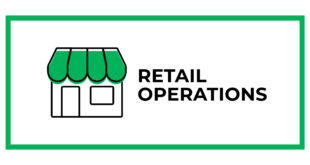While shoplifting receives most of the attention when looking at shrinkage, internal theft and fraud also account for a large percentage. While the National Retail Federation (NRF) doesn’t track the data anymore in its annual National Retail Security Survey, in 2018, it found 35.7% of shrinkage came from shoplifting and external left, while internal and employee theft accounted for 33.2% of shrinkage. Other sources of shrinkage included administrative and paperwork errors, vendor fraud and errors and unknown reasons.
In the October issue of Hardware Retailing, retailers shared best practices for handling shoplifting and external theft. Read on for insights from other retailers on ways to handle shrinkage from internal theft, employee fraud and administrative errors.
Returns and Price Markdowns
For Kyle Riddle, store manager of Redbud True Value in Lubbock, Texas, loss prevention is a top priority for his operation. In the two years since he became store manager, he has delved into learning all he can about preventing theft and fraud in his store through learning modules offered by the operation’s wholesaler.
“I have also gained a wealth of knowledge from doing my own research, whether it be reading different articles or observing other stores in the area and noting how they handle such issues. I picked out strategies that made a lot of sense to me to try in our store,” Riddle says. “We have worked diligently to reduce shoplifting and fraud in my store, and I know we have been very successful in reducing losses.”
When it comes to internal loss prevention methods, Riddle says he has created a returns log book. Any returns done in this store must be logged in the returns book along with a duplicate receipt attached. The log also requires all employees to notate what was returned, why and the amount, which Riddle says is a simple control measure that prevents fraudulent activity.
Another layer of protection against fraud is the store’s retail price markdown acknowledgment form. The retail price markdown policy requires all employees to sign off so no markdowns are permitted without approval from management.
Inventory Errors
Geoff Saunders, manager of Cascade Home Center in Dallas, Oregon, relies on extra employee training to handle admin and negative on-hand errors.
“If on-hands have gone negative, it means something has been sold incorrectly because you can’t sell something that doesn’t exist,” Saunders says. “If your on-hands reach zero and you are selling more than you thought you had, something else was sold in its place it should not have been.”
To handle these types of issues, Saunders says they closely monitor negative on-hands and investigate those transactions. The staff tracks how the product was received, stocked and sold and uses deductive reasoning to find the issue.
“We identify the cause of shrink and then educate the staff through weekly huddles on best practice point of sale techniques, such as scanning every item,” Saunders says. “If we are having consistent problems in a category with multiple on-hand discrepancies, we will typically count the entire category and many of the answers to our mysteries are revealed. High volume commodities should be put on a cycle counting schedule and counted more frequently.”
Saunders also utilizes “cart tests”, where employees scan a cart of items and have to look for accidentally and intentionally hidden items like a thin saw blade between two bags of soil or a trash can hiding other products.
“Exercises like these can really enhance awareness,” Saunders says.
 Hardware Retailing The Industry's Source for Insights and Information
Hardware Retailing The Industry's Source for Insights and Information








